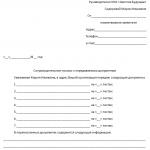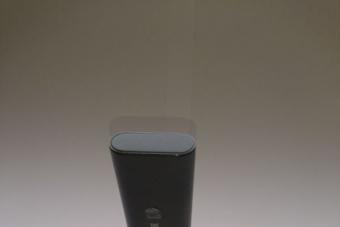TEXT CODE OF THE LESSON:
The engineer spends a lot of time on the development of the device design. Changing and modifying the design of the device. Why, for example, does a household fan have exactly this shape? The design must be such that the fan does not fall and stand firmly perpendicular to the floor during operation. The design of this household appliance can be transferred to a drawing.
We will replace the floor with the plane α, depict the fan bar in the form of a straight line a, and the mounting legs in the form of straight lines b and c.
Suppose that if a straight line is perpendicular to two intersecting straight lines lying in a plane, then it is perpendicular to this plane.
Let us prove the assumption.
Consider our line a, which will be perpendicular to the intersecting lines b and c, lying in the plane α. Let us denote the point of intersection of the lines by the point M.
Let us prove that the line a is perpendicular to the plane α.
Since we know that a straight line is perpendicular to the plane if it is perpendicular to any straight line lying in this plane, then we need to prove the perpendicularity of the straight line a to an arbitrary straight line x.
For the proof, construct an additional line y parallel to the line x and passing through the point M.
Additionally, on the straight line a, mark the points M1 and M2 so that the point M is the middle of the segment M1M2.
We also draw a straight line in the plane intersecting lines b, c, y at points B, C, Y, respectively.
Let's connect the obtained points with the ends of the segment М1М2. Since the straight lines b and c are perpendicular to the straight line a and pass through the middle of the segment М1М2, they can be called mid-perpendiculars to the segment М1М2. Then points B and C are equidistant from the ends of the segment, that is, segment M1B is equal to segment BM2, and segment M1C is equal to segment CM2.

The BM1M triangle is equal to the BM2M triangle on three sides. From the equality of the triangles it follows that the angle М1ВY is equal to the angle.
Then the triangles М1ВY is equal to the triangle М2ВY on both sides and the angle between them. The equality of these triangles implies the equality of the segments M1Y and M2Y.
This means that the triangle М1YМ2 is isosceles with the base М1М2 and the segment YМ is its median, and by the property of the median of an isosceles triangle drawn to the base of the triangle, the segment YМ is the height, so the straight lines y and a containing these segments can be considered perpendicular.
Line y is perpendicular to line a, and parallel to line x. By the lemma on the perpendicularity of two parallel lines to the third line, it follows that the line x is also perpendicular to the line a.
So, the straight line a is perpendicular to any straight line x, so it is perpendicular to the plane α.
But in this theorem, another case of the location of the straight line a is possible, which is not demonstrated by our configuration of the drawing. When line a does not pass through the intersection of lines b and c.
Let us prove this option as well.

In this case, we draw a straight line a1, parallel to the straight line a and passing through the point M.
It is important to remember the theorem learned in the previous lesson:
if one of the two parallel lines is perpendicular to the plane, then the other line is perpendicular to this plane.
Since line a is perpendicular to lines b and c and parallel to line a1, then by the lemma line a1 will also be perpendicular to lines b and c.
In this arrangement of lines, we have already proved that the line is perpendicular to the plane.
But then if the straight line a1 is perpendicular to the plane and parallel to the straight line a, then by Theorem 1 the straight line a is perpendicular to the plane α.
This theorem makes it possible to prove the perpendicularity of a straight line in a plane, indicating the perpendicularity of only two intersecting straight lines lying in this plane, and not any straight line. In geometry, this statement is called the sign of the perpendicularity of a line and a plane.
Consider the use of the sign of perpendicularity of a line and a plane.
Given a triangle ABC with the sum of the angles A and B at 90 degrees. Line BD is drawn perpendicular to the plane of the triangle ABC.
Straight line CD lies in the plane of triangle BCD.
Triangle ABC is rectangular, since the angle ACB is equal to the difference of 180 degrees and the sum of the angles A and B. So the line AC is perpendicular to the straight line BC.
By condition, the straight line BD is perpendicular to the plane ABC, which means it is perpendicular to the straight line AC.
Then the line AC is perpendicular to two intersecting straight lines BC and BD lying in the plane of the triangle BCD, which means that AC is perpendicular to the plane BCD and perpendicular to the straight line CD lying in this plane.
Consider another example of solving the problem.

Given two squares ABCD and ABEF, they are positioned so that the side is AD AF.
Since ABEF is a square, line AB is perpendicular to side AF.
Then, on the basis of the perpendicularity of the straight line and the plane AF of the plane of the square ABCD and the straight line BC lying in this plane.
By the definition of the square ABCD, the side BC is perpendicular to the straight AB, but the straight AB is parallel to the straight FE of the plane ABEF, therefore, by the lemma on parallel straight lines perpendicular to the third straight line, the straight FE is perpendicular to the straight BC.
Thus, the straight line BC is perpendicular to the intersecting straight lines AF and FE lying in the plane AEF, which, therefore, by the sign of the perpendicularity of the straight line to the plane, means the straight line BC is perpendicular to the plane AEF.
In the future, using this criterion, several main theorems on the perpendicularity of lines and planes in space will be proved.
Topic: The sign of perpendicularity of a line and a plane
Geometry lesson in grade 10
Lesson information card
Thing: Geometry
Class: 10 .
Topic: "Sign of perpendicularity of a line and a plane"
Lesson objectives:
To get acquainted with the sign of perpendicularity of a straight line and a plane and learn how to apply it in solving stereometry problems
Development of spatial imagination and logical thinking of students
Fostering a respectful attitude towards the opinions of others
Lesson form: combined
Lesson structure
Organizing time
Updating students' knowledge on the topic “Perpendicularity of straight lines in space. Determination of the perpendicularity of a line and a plane ”.
Acquaintance with the sign of perpendicularity of a line and a plane, proof of the theorem.
Practicing the skills of applying the sign of perpendicularity of a straight line and a plane when solving oral and written problems.
Summing up the lesson.
Homework.
Description of the course of the lesson
Organizational moment of the lesson: greeting, checking readiness for the lesson (workbooks, textbooks, writing utensils).
the concept of perpendicularity of straight lines in space;
perpendicularity of a straight line and a plane;
properties of parallel lines perpendicular to the plane.
Knowledge update received by students in the previous lesson:
2.1. In order to update knowledge, one student goes to the blackboard and writes down the solution to the problem that caused the greatest difficulties in homework.
2.2. While he prepares, a frontal poll of the class:
What is the relative position of straight lines in space?
How is the angle between lines in space determined?
What straight lines in space are called perpendicular?
Formulate a lemma on parallel lines perpendicular to the third line.
Give a definition of the perpendicularity of a line and a plane.
After completion, an operational check of the correctness of the answers. Deal with the issues that caused difficulties.
Additional questions for # 4 and # 5:
give a verbal formulation of the properties of parallel lines;
give a verbal formulation of the properties of lines perpendicular to the plane.
2.4. Invite students to verbally solve a problem

In a more prepared class, additionally suggest the second part of the problem with numerical data for solving.
2.5. Checking the correctness of the solution to the home problem.
3. Study of the sign of perpendicularity of a straight line and a plane.
3.1. Before studying the feature directly, draw the students' attention to the fact that in practice it is impossible to use the definition of the perpendicularity of a straight line and a plane, since it is impossible to check the perpendicularity of a straight line to any straight line in a given plane. The sign helps to facilitate the task.
The topic of the lesson and the main goal are announced

The topic of the lesson is written in a notebook, homework.
3.2. The proof of the theorem (and the drawing) is carried out in stages (slide 4), the students take notes in a notebook. In a more prepared class, the whole plan of the proof is given, the students justify each point of the proof on their own, if necessary, you can use the textbook. In a less prepared class, each point of evidence is discussed and then the students take notes.

3.3. Those students who quickly cope with the proof of the theorem can be given an additional task on the cards:
"Prove the sign of perpendicularity of a line and a plane using vectors"
In the case of a quick and successful solution, the student proves the theorem at the blackboard. If the second proof is not found in the lesson, invite those who wish to complete it at home

4. Practice skills application of theoretical knowledge to problem solving.
4.1. For the purpose of the primary consolidation of the ability to apply the sign of perpendicularity of a straight line and a plane, propose for oral solution of problems 1, 2 and 3 (slides 6, 7 and 8, respectively).


In the less prepared class, it is more expedient to complete task 3 after the written decision No. 127 from the textbook.

Slide 11
5. Bring down Lesson summary... Suggest the following as additional questions:
who knows how you can check in practice the perpendicularity of a straight line and a plane, what tools exist for this (using two triangles, using two levels);
how important is it that in the sign of perpendicularity of a straight line and a plane, two intersecting straight?
6. Record homework(slide 3, optional card with an additional task).
In this lesson, we will review the theory and prove the theorem-criterion for the perpendicularity of a line and a plane.
At the beginning of the lesson, recall the definition of a straight line perpendicular to a plane. Next, we consider and prove a theorem-criterion for the perpendicularity of a line and a plane. To prove this theorem, recall the property of the mean perpendicular.
Next, we will solve several problems on the perpendicularity of a line and a plane.
Topic: Perpendicularity of a line and a plane
Lesson: The sign of the perpendicularity of a line and a plane
In this lesson we will review the theory and prove a test theorem for the perpendicularity of a line and a plane.
Definition... Straight a is called perpendicular to the plane α if it is perpendicular to any straight line lying in this plane.
If a straight line is perpendicular to two intersecting straight lines lying in a plane, then it is perpendicular to this plane.
Proof.
Let us be given a plane α. This plane contains two intersecting straight lines p and q... Straight a perpendicular to a straight line p and straight q... We need to prove that the straight line a perpendicular to the plane α, that is, that line a is perpendicular to any line lying in the plane α.
Reminder.
For the proof, we need to recall the properties of the midpoint perpendicular to the segment. Mid perpendicular R to the segment AB is the locus of points equidistant from the ends of the line segment. That is, if the point WITH lies on the median perpendicular p, then AC = BC.
Let the point O- point of intersection of a straight line a and the plane α (Fig. 2). Without loss of generality, we will assume that the straight lines p and q intersect at the point O... We need to prove that the line is perpendicular a to an arbitrary line m from the plane α.
Let's draw through the point O straight l parallel to the straight line m. On a straight line a postpone the segments OA and OV, and OA = OV, that is, point O- the middle of the segment AB... Let's draw a straight line PL, ![]() .
.

Straight R perpendicular to a straight line a(from the condition), ![]() (by construction). Means, R AB... Dot R lies on a straight line R... Means, RA = PB.
(by construction). Means, R AB... Dot R lies on a straight line R... Means, RA = PB.
Straight q perpendicular to a straight line a(from the condition), ![]() (by construction). Means, q- the middle perpendicular to the segment AB... Dot Q lies on a straight line q... Means, QА =QB.
(by construction). Means, q- the middle perpendicular to the segment AB... Dot Q lies on a straight line q... Means, QА =QB.
Triangles ARQ and BPQ equal on three sides (PA = PB, QА =QB, PQ - common side). So the angles ARQ and BPQ are equal.
Triangles APL and BPL equal in angle and two adjacent sides (∠ ARL= ∠BPL, PA = PB, PL- common side). From the equality of the triangles, we obtain AL =BL.
Consider a triangle ABL. It is isosceles since AL =BL. In an isosceles triangle, the median LO is also a height, that is, a straight line LO perpendicular AB.
We got that straight a perpendicular to a straight line l, and hence a straight line m, Q.E.D.
Points A, M, O lie on a straight line perpendicular to the plane α, and the points Oh, B, C and D lie in the plane α (Fig. 3). Which of the following angles are right:?

Solution
Consider a corner. Straight JSC is perpendicular to the plane α, which means that the straight line JSC perpendicular to any straight line lying in the plane α, including the straight line IN... Means, .
Consider a corner. Straight JSC perpendicular to a straight line OS, means, .
Consider a corner. Straight JSC perpendicular to a straight line OD, means, . Consider a triangle DAO... There can be only one right angle in a triangle. So the angle DAM- is not straightforward.
Consider a corner. Straight JSC perpendicular to a straight line OD, means, .
Consider a corner. This is the corner in a right triangle BMO, it cannot be right, since the angle MOU- straight.
Answer: ![]() .
.
In a triangle ABC given:, AS= 6 cm, Sun= 8 cm, CM is the median (Fig. 4). Across the top WITH a direct SC perpendicular to the plane of the triangle ABC, and SC= 12 cm. Find KM.

Solution:
Find the length AB by the Pythagorean theorem: (cm).
By the property of a right-angled triangle, the midpoint of the hypotenuse M equidistant from the vertices of the triangle. That is CM = AM = BM, ![]() (cm).
(cm).
Consider a triangle KSM... Straight KS perpendicular to the plane ABC, which means KS perpendicular CM... So the triangle KSM- rectangular. Find the hypotenuse KM from the Pythagorean theorem: (see).
1. Geometry. Grades 10-11: a textbook for students of educational institutions (basic and profile levels) / I. M. Smirnova, V. A. Smirnov. - 5th edition, revised and supplemented - M .: Mnemozina, 2008. - 288 p .: ill.
Tasks 1, 2, 5, 6 p. 57
2. Give the definition of the perpendicularity of a line and a plane.
3. Pick an edge and face pair in the cube that are perpendicular.
4. Point TO lies outside the plane of the isosceles triangle ABC and equidistant from points V and WITH. M- middle of the base Sun... Prove that the straight line Sun perpendicular to the plane AKM.
In this article, we will talk about the perpendicularity of a line and a plane. First, a definition of a straight line perpendicular to a plane is given, a graphic illustration and an example are given, the designation of perpendicular lines and a plane is shown. After that, a sign of the perpendicularity of a straight line and a plane was formulated. Further, conditions are obtained that make it possible to prove the perpendicularity of a straight line and a plane, when a straight line and a plane are given by some equations in a rectangular coordinate system in three-dimensional space. In the conclusion, detailed solutions of typical examples and problems are shown.
Page navigation.
Perpendicular line and plane - basic information.
We recommend that you first repeat the definition of perpendicular straight lines, since the definition of a straight line perpendicular to a plane is given through the perpendicularity of straight lines.
Definition.
They say that straight line perpendicular to the plane if it is perpendicular to any straight line lying in this plane.
You can also say that the plane is perpendicular to the line, or the line and the plane are perpendicular.
To indicate perpendicularity use the icon of the form "". That is, if the line c is perpendicular to the plane, then it can be written briefly.

An example of a straight line perpendicular to a plane is a straight line along which two adjacent walls of a room intersect. This line is perpendicular to the plane and to the plane of the ceiling. A rope in a gym can also be thought of as a straight line segment perpendicular to the plane of the floor.
In the conclusion of this paragraph of the article, we note that if a straight line is perpendicular to the plane, then the angle between the straight line and the plane is considered equal to ninety degrees.
Perpendicularity of a straight line and a plane is a sign and conditions for perpendicularity.
In practice, the question often arises: "Are the given line and plane perpendicular?" To answer it, there is sufficient condition for perpendicularity of a line and a plane, that is, such a condition, the fulfillment of which guarantees the perpendicularity of the line and the plane. This sufficient condition is called the sign of the perpendicularity of a line and a plane. Let us formulate it in the form of a theorem.
Theorem.
For the perpendicularity of the given line and plane, it is sufficient that the line is perpendicular to two intersecting straight lines lying in this plane.
You can look at the proof of the sign of perpendicularity of a straight line and a plane in the geometry textbook for grades 10 -11.
When solving problems of establishing the perpendicularity of a line and a plane, the following theorem is also often used.
Theorem.
If one of the two parallel lines is perpendicular to the plane, then the second line is perpendicular to the plane.
The school considers many problems, for the solution of which the criterion of perpendicularity of a line and a plane is used, as well as the last theorem. We will not dwell on them here. In this paragraph of the article, we will focus on the application of the following necessary and sufficient condition for the perpendicularity of a line and a plane.
This condition can be rewritten as follows.
Let ![]() is the direction vector of the straight line a, and
is the direction vector of the straight line a, and ![]() is the normal vector of the plane. For the perpendicularity of the straight line a and the plane, it is necessary and sufficient that
is the normal vector of the plane. For the perpendicularity of the straight line a and the plane, it is necessary and sufficient that ![]() and
and ![]() :
:  , where t is some real number.
, where t is some real number.
The proof of this necessary and sufficient condition for the perpendicularity of a straight line and a plane is based on the definitions of the direction vector of the straight line and the normal vector of the plane.
Obviously, this condition is convenient to use to prove the perpendicularity of a straight line and a plane, when it is easy to find the coordinates of the directing vector of the straight line and the coordinates of the normal vector of the plane in a fixed three-dimensional space. This is true for the cases when the coordinates of the points through which the plane and the straight line pass, as well as for cases when the straight line is determined by some equations of a straight line in space, and the plane is given by an equation of a plane of some kind.
Let's consider the solutions of several examples.
Example.
Prove the perpendicularity of a straight line  and plane.
and plane.
Solution.
We know that the numbers in the denominators of the canonical equations of a straight line in space are the corresponding coordinates of the direction vector of this straight line. In this way, ![]() - directing vector of a straight line
- directing vector of a straight line  .
.
The coefficients for the variables x, y and z in the general equation of the plane are the coordinates of the normal vector of this plane, that is, ![]() is the normal vector of the plane.
is the normal vector of the plane.
Let us check the fulfillment of the necessary and sufficient condition for the perpendicularity of the line and the plane.
Because  , then the vectors and are related by the relation
, then the vectors and are related by the relation ![]() , that is, they are collinear. Therefore, the straight line
, that is, they are collinear. Therefore, the straight line  perpendicular to the plane.
perpendicular to the plane.
Example.
Is the line perpendicular  and plane.
and plane.
Solution.
Let us find the direction vector of the given line and the normal vector of the plane in order to check the fulfillment of the necessary and sufficient condition for the perpendicularity of the line and the plane.
The direction vector of the straight line  is an
is an





